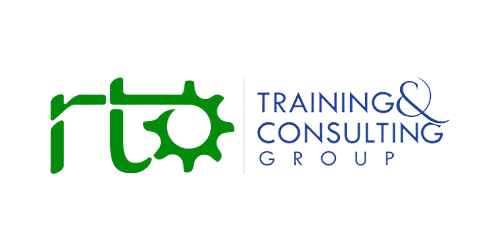The landscape of the Vocational Education and Training (VET) sector is characterized by constant evolution, requiring both educators and learners to adapt and grow continuously. In this dynamic environment, the ability to embrace challenges and persevere through difficulties is not just a desirable trait but an essential one. This article delves into the profound importance of "doing hard things" in the VET sector, drawing inspiration from the 15 steps outlined in the accompanying infographic by Benjamin Bargetzi.
- Stepping Out of Your Comfort Zone Leads to Growth (Step 1):
In the VET sector, stepping outside one's comfort zone is not merely a suggestion but a necessity. For educators, this could mean adopting innovative teaching methods, incorporating new technologies into the classroom, or venturing into unfamiliar subject areas. For learners, it could involve taking on challenging projects, pursuing further qualifications, or exploring new career paths. Embracing discomfort and venturing into the unknown is where true growth and development occur.
- Facing Difficulties Drives Creative Thinking (Step 2):
The VET sector often faces complex challenges, such as skill shortages, technological advancements, and changing industry demands. When educators and learners encounter difficulties, it forces them to think creatively and develop innovative solutions. By embracing challenges as opportunities for growth, the VET sector can remain agile and responsive to the evolving needs of the workforce.
- Hard Choices Build Character (Step 3):
In the VET sector, individuals are often faced with difficult choices, such as selecting the right course, choosing a career path, or deciding whether to invest in further education. These choices, while challenging, help individuals develop resilience, determination, and a strong sense of purpose.
- Overcoming Challenges Together Strengthens Relationships (Step 4):
Collaboration and teamwork are essential in the VET sector. When educators and learners work together to overcome challenges, they build strong relationships based on trust, mutual respect, and shared experiences. These strong relationships create a supportive learning environment where everyone feels valued and empowered to contribute their unique skills and perspectives.
- Performing Difficult Tasks Builds Skills (Step 5):
The VET sector is focused on equipping learners with the skills and knowledge needed for successful careers. By engaging in difficult tasks, such as complex projects or hands-on training, learners develop valuable skills that are directly applicable to the workplace. These skills not only enhance their employability but also boost their confidence and self-efficacy.
- Enduring Tough Times Demonstrates Commitment (Step 6):
The journey through vocational education and training is not always smooth sailing. There will be setbacks, challenges, and moments of doubt. However, enduring tough times and persevering through difficulties demonstrates a strong commitment to personal and professional growth. This resilience is a valuable asset in the workplace, where the ability to adapt to change and overcome obstacles is highly sought after.
- Learning to Navigate Uncertainty Improves Decision-Making (Step 7):
The VET sector is constantly evolving, and uncertainty is a constant companion. By learning to navigate uncertainty, educators and learners develop critical decision-making skills. They become adept at assessing risks, weighing options, and making informed choices that lead to positive outcomes. This ability to thrive in ambiguity is essential in today's rapidly changing world.
- Empowering Others to Tackle Hardships Builds Confidence (Step 8):
In the VET sector, empowering others to take on challenges is a fundamental aspect of leadership. When educators and trainers empower learners to face difficulties head-on, it not only builds the learners' confidence but also strengthens the entire learning community. By fostering a culture of empowerment, the VET sector can create a ripple effect of positive change.
- Integrating Tough Lessons Ensures Continuous Improvement (Step 9):
Learning from failures and setbacks is crucial for growth. In the VET sector, this means integrating tough lessons into future practices. By analysing what went wrong and identifying areas for improvement, educators and trainers can continuously refine their approaches and enhance the quality of education and training. This commitment to continuous improvement is essential for staying ahead of the curve in a dynamic industry.
- Overcoming Failures Bolsters a Growth Mindset (Step 10):
A growth mindset is the belief that abilities and intelligence can be developed through dedication and hard work. In the VET sector, overcoming failures and setbacks fosters a growth mindset. Learners who embrace challenges as opportunities for learning are more likely to persevere in the face of adversity and achieve their goals.
- Challenging the Status Quo Drives Positive Change (Step 11):
The VET sector has the potential to drive positive change in society by challenging the status quo and questioning existing practices. By encouraging critical thinking and innovation, the sector can develop new and improved approaches to education and training that better meet the needs of learners and the workforce.
- Pushing Through Adversity Reveals Inner Strength (Step 12):
Facing adversity is an inevitable part of life. In the VET sector, individuals may encounter personal or professional challenges that test their resilience. However, pushing through adversity reveals inner strength and fosters a sense of accomplishment. By overcoming challenges, individuals gain confidence in their abilities and develop the fortitude to tackle future obstacles.
- Committing to Difficult Goals Helps You Aim Higher (Step 13):
Setting ambitious goals is essential for personal and professional growth. In the VET sector, this could mean aiming for higher qualifications, pursuing leadership roles, or expanding the scope of one's expertise. By committing to difficult goals, individuals stretch their limits and unlock their full potential.
- Your Dopamine Levels Adjust to Your New Heights (Step 14):
The human brain is wired to seek rewards. When we achieve difficult goals, our brains release dopamine, a neurotransmitter associated with pleasure and motivation. Over time, our dopamine levels adjust to our new heights, driving us to seek even greater challenges and achievements. In the VET sector, this means that by continually pushing ourselves to do hard things, we can create a virtuous cycle of growth and success.
- Your Habits Become Your New Status Quo (Step 15):
Our habits shape our lives. By consistently engaging in challenging activities and stepping outside our comfort zones, we develop habits that support our growth and success. In the VET sector, this means cultivating habits of lifelong learning, continuous improvement, and resilience. These habits become our new status quo, enabling us to thrive in a dynamic and ever-changing environment.
In conclusion, embracing the challenge of doing hard things is not only essential for personal and professional growth but also critical for the success of the Vocational Education and Training sector. By stepping outside our comfort zones, facing difficulties head-on, and pushing through adversity, we can unlock our full potential, drive positive change, and create a more fulfilling and impactful future for ourselves and our communities.
As Benjamin Franklin wisely said, "Energy and persistence conquer all things." Let us embrace this wisdom and strive to do hard things, not because they are easy, but because they are worth it.


































